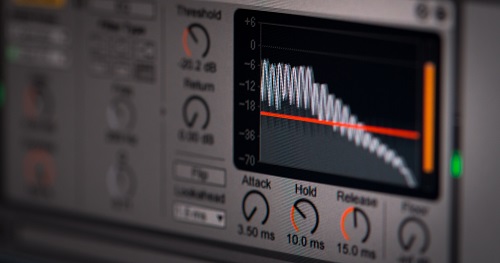Updates To The EU Blue Guide: Impacts on Market Surveillance of Medical Devices
In July 2021, Regulation (EU) 2019/1020 on market surveillance and product compliance, issued by the European Parliament and Council, came into force. The regulation forms the core of European market surveillance law and will grant market surveillance authorities additional powers and strengthen the exchange of information between competent authorities. Furthermore, it seeks to uniformly and efficiently implement and enforce EU product rules to increase compliance and decrease risks related to products with CE marking on the EU market.
Due to the new market surveillance regulation, the European Commission has updated its Blue Guide on the Implementation of the Product Rules 2022/C 247/01, issued June 29, 2022. As a result, the Blue Guide has undergone some notable changes, including defining new terms, providing additional guidance on economic operators and their responsibilities, and incorporating Regulation (EU) 2019/1020 on market surveillance and compliance of products.
This article will focus on the consequences of the updated Regulation and Blue Guide on market surveillance of medical devices and how manufacturers can ensure compliance with the new legislative framework.

What is Market Surveillance Regulation (EU) 2019/1020?
The European Commission, as part of its Single Market Strategy, aims to keep non-compliant products out of the EU market. In 2015, the Commission announced efforts to“..introduce an initiative to strengthen product compliance by (…) intensifying compliance checks and promoting closer cross-border cooperation among enforcement authorities, including through cooperation with customs authorities”, which came to a head with the publication of Regulation (EU) 2019/1020 on June 20, 2019.
The new regulation includes a variety of goods, product categories, and product groups – it covers every product subject to the regulations mentioned in Annex II. For example, Regulation 2017/745 and 2017/746 for medical devices and IVDs, respectively, are mentioned in articles 65 and 66. Other products subject to the new market surveillance regulation include toys, batteries, cosmetics, textiles, and many more.
Enforcement of EU product rules
The regulation provides competent authorities with extensive powers to ensure effective market surveillance and EU product rules, such as being able to order product recalls, corrective actions, or risk mitigation measures, as well as carrying out mystery shopping or reverse-engineering activities, and ordering mandatory warnings or removal of content from any online interfaces.
The regulation also emphasizes the exchange of information between authorities, international cooperation, and import controls.

The regulation has intensified market surveillance for manufacturers, importers, and distributors with products on the EU market. At the same time, it restricts the distribution of competing for non-compliant products without CE marking from non-EU countries, especially for non-EU suppliers who sell their products directly to the European Union through online platforms.
What is the Blue Guide?
The Blue Guide is a way for the European Commission to give manufacturers and other economic operators a better understanding of EU product rules and encourage a uniform application across the market. It is, essentially, a guide on the implementation of current regulations.
The first edition of the Blue Guide was published in the year 2000. Subsequently, revisions have been made in 2014, 2016, and now this year.
The Blue Guide is not a regulation or law – it is a non-binding reference manual that guides market surveillance in the EU market. Its goal is to clarify existing legislation, contribute to comprehensive and harmonized legislation covering all Member States, and provide a common understanding of implementing compliance rules during product marketing.

Changes to the EU Blue Guide
The latest edition of the Blue Guide has made some notable changes, prominently reflecting the addition of the Regulation on Market Surveillance.
Other changes to the Blue Guide include adding fulfillment service providers as a novel category of economic operations that must cooperate with market surveillance regulations for any products they handle. Fulfillment service providers offer warehousing, packaging, addressing, and dispatching without ownership of the product.
Additional information has been added to the EU Blue Guide regarding what is considered “making available on the market” and “placing on the market” when online or distance selling (via e-commerce). Notably, new factors for when products are targeted at end users in the EU by non-EU-based sellers have been added.
Another interesting addition to the healthcare sector is when a substantially modified product can be considered a new product. This can now be determined through a simple three-part test.
Lastly, the Blue Guide introduces a new section on software, explicitly stating that software manufacturers have “obligations to foresee the risks of software integrated into that product.” These obligations can be especially tricky for medical device and in vitro diagnostic medical device manufacturers who produce devices with integrated software.

Impact on medical devices and medical device manufacturers
It is important to know that the Blue Guide is, well, a guide. It is not a regulation, meaning that anything stated in the Medical Device Regulation or IVD Regulation takes priority over anything stated in the Blue Guide.
The MDR and IVDR have extensive sections on software integrated into medical devices and software as stand-alone medical devices. Unfortunately, the Blue Guide does not offer any expansion on what is already in the regulations.
The same is the case for the updated sections on repairs and modifications of devices on the market.

While other product groups might suffer under incomplete regulations, medical devices are heavily regulated with exceptionally well-defined requirements and responsibilities outlined in the MDR and IVDR. The new market surveillance regulation and the updated Blue Guide do not provide much additional information for the compliance and market surveillance of medical devices and IVDs, as most of the information contained in the two documents is already included and expanded on in the MDR and IVDR.
There are situations where the Blue Guide can come in handy for interpretation purposes or additional information. Still, on its own, it will not be able to provide any new insights for medical device manufacturers, importers, and other economic operators.
